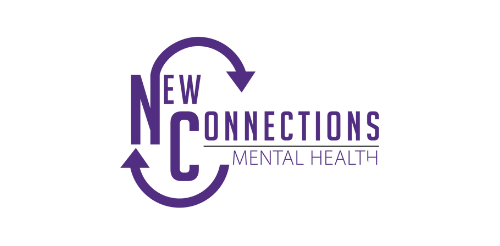Therapy for family in Hays, Kansas
Therapy for family in Hays, Kansas
This is paragraph text. Click it or hit the Manage Text button to change the font, color, size, format, and more. To set up site-wide paragraph and title styles, go to Site Theme.
What is therapy for family?
Family therapy is a collaborative, solution-focused space where all voices are heard. It’s not about placing blame—it’s about creating new ways of relating, healing, and working through conflict as a unit.
At New Connections, we draw from Internal Family Systems (IFS), attachment theory, and trauma-informed care to help families identify unhelpful dynamics and co-create new patterns that foster connection and trust. Whether it’s a parent-child conflict, sibling tension, or generational wounds, we meet your family with compassion, curiosity, and clarity.
Most common symptoms therapy can support:
- Constant conflict or arguments
- Emotional distance or silence between family members
- Trouble adapting after divorce, remarriage, or other transitions
- Trauma or grief affecting family dynamics
- Parent-child power struggles
- Behavioral issues at home or school
- Difficulty setting or respecting boundaries
- Communication breakdowns
How do I know if my family needs therapy?
Ask yourself:
- Do we keep having the same arguments over and over?
- Do I feel disconnected or emotionally distant from my child, partner, or another family member?
- Have we experienced a big change (divorce, loss, trauma) that still affects us?
- Do I wish we had better tools to talk through things without yelling, silence, or shutdowns?
- Are the emotional needs of one or more family members being missed or misunderstood?
If you said yes to any of these, family therapy could be a supportive next step.
How we treat families in Hays, Kansas
We approach family therapy through a systems lens: each member plays a role, and change happens when we explore those roles together. Our therapists create a safe environment for every voice to be heard, facilitating new ways of listening, setting boundaries, and relating.
Our approach may include:
- Internal Family Systems (IFS): Helping members understand their own internal parts while exploring family dynamics
- Attachment-Based Interventions: Strengthening trust and emotional safety between parents, children, and siblings
- Parent Coaching: Supporting caregivers with tools to lead with connection and calm authority
- Interactive Activities: Including creative exercises, communication games, and somatic techniques to support healing in real time
- Psychoeducation: Teaching families about the nervous system, conflict cycles, and repair strategies
What topics can we talk about in family therapy?
- Navigating divorce or remarriage
- Processing grief or trauma as a family
- Repairing trust and rebuilding connection
- Improving emotional regulation and boundaries
- Helping children and teens feel safe and understood
- Reducing power struggles and defiance
- Learning how to validate each other’s experiences
How to get support
Get a Personalized Plan
We match your child with the right therapist and create a tailored approach.
Start with a Consultation
A conversation to understand your child’s needs and your goals.
Begin Sessions
Your child attends regular sessions while you get ongoing support, too.
Grow and Move Forward
Our goal isn’t to keep you in therapy forever—it’s to help your child build lasting skills and your family feel confident handling whatever life throws at you on your own.
Therapy for family specialists in Hays, Kansas
At New Connections Mental Health, we believe families don’t have to be perfect to be strong. Our team specializes in therapy for family systems and works with children, teens, and parents to build mutual understanding and lasting connection. Whether your family is in crisis or simply seeking better ways to communicate, we’re here to help you navigate the challenges together.
Tips & resources for strengthening your family dynamic
- Schedule weekly “connection check-ins” to talk without distractions
- Practice reflective listening (repeating back what someone says before responding)
- Use “I feel” statements to express emotions without blame
- Create shared rituals (meals, walks, game nights) to foster connection
- Seek professional support when patterns feel stuck or overwhelming

Hi! I'm Michelle Holdeman
Licensed therapist and play therapy specialist for families navigating big emotions.
I help overwhelmed parents, sensitive kids, and emotionally intense teens move from daily meltdowns to deeper connection—using play-based, trauma-informed therapy that truly works. At New Connections Mental Health, we create space for healing, growth, and lasting change—one session, one family, one feeling at a time.

At New Connections Mental Health, we believe every child and family deserves access to high-quality therapy and support. That’s why we offer payment options to help make the process as stress-free as possible.
Book your first session
Play Therapy Sessions are typically 45-55 minutes, and range from $75-$150 a session
FAQ
What is therapy for internal family systems?
IFS is a therapy model that helps individuals and families explore the different "parts" of themselves (like anger, fear, or protectiveness) to foster healing, balance, and connection.
What is family-based therapy?
Family-based therapy focuses on the whole family as the client, using collaboration and communication to address challenges that affect everyone—not just one member.
What are examples of a family crisis?
Divorce, a death in the family, a child’s mental health diagnosis, financial instability, or sudden relocation are all examples of family crises that can create emotional disruption.
How to fix broken relationships with family?
Repairing relationships takes time, vulnerability, and willingness. Therapy helps families rebuild trust by creating space for honest conversations, emotional safety, and practical tools.
What are some family systems therapy activities?
Examples include family mapping (genograms), communication games, parts work, role reversal, and collaborative problem-solving activities.
